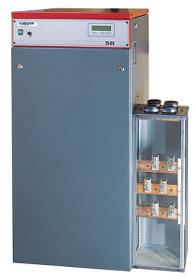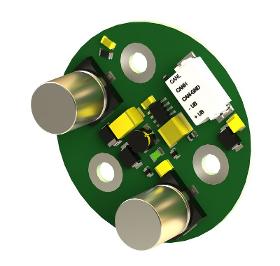- europages
- >
- COMPANIES - SUPPLIERS - SERVICE PROVIDERS
- >
- electric time
Results for
Electric time - Import export

SHENZHEN PROMOSTAR HARDWARE CO.,LTD
Germany
The double anodization process can be used to create a protective anodization layer on various parts of a consumer electronic product, including top and bottom portions, side walls, and chamfered portions. It’s particularly useful for improving corrosion resistance and wear resistance, and it provides better adhesion for paint primers and glues than bare metal does. The process is not limited to aluminum; it can also be applied to other metals like titanium, zinc, magnesium, and others. However, aluminum is the most common due to its widespread use in consumer electronics and other applications where weight and durability are important factors.Double anodization is a complex process that requires precise control over the electrolytic solutions, electrical current, and time to ensure the desired outcome. It’s a testament to the advancements in materials engineering and its ability to tailor the properties of metals for specific applications.
Request for a quote
IGUS® GMBH
Germany
- Low-maintenance system for travel up to 100 m - Other sizes and versions available, travel up to 200 m and more with E2 roller e-chains® - Protection against weather and dirt exposure - Cost-effective and fully enclosed complete solution - Standardized and modular design - Simple wall assembly or optional floor mounting - Cable lengths up to 50% shorter than festooning, low-profile installation and no cable junction - Cables are at all times guided with a defined bending radius, and tensile forces are absorbed by the e-chain® - Cables cannot hook, jam, or tear - No slip ring contacts (as is the case on motor drums) -Cables or hoses can easily be retrofitted at any time Reduce electricity costs - direct drive due to scraper, no additional drives needed (as is the case on motor drums) Scraper arm (e.g. as mechanical connection to the scraper carriage) optionally available - we document the situation on-site and will propose a customised solution
Request for a quote
KLÖPPER-THERM GMBH & CO. KG
Germany
Klöpper Therm electric flow boilers are used for generating hot water in heating units for direct heating, storage operation or for Power to Heat systems. As an alternative to other energy types in new buildings or when converting central heating units, these boilers offer a universal range of applications radiator heating, floor heating, mixed systems or bivalent operation with other energy types. Depending on the relevant operating conditions of the energy supplier, the boilers are used for direct or storage heating by utilising free electric power during off peak times.
Request for a quote
WALTER STAUFFENBERG GMBH & CO. KG
Germany
▪ Analogue version ▪ 5-pin connection ▪ Can be used with all analogue Hydraulic Testers of the PPC series ▪ CAN version ▪ 5-pin SPEEDCON connection plug ▪ Housing: Aluminium (black anodised) ▪ Gaskets: FPM (Viton®) ▪ Accuracy (at 21 cSt): ±1 (% FS*) or ±1 (% of the displayed value) ▪ Pressure measurement connection: SMK20 (M16 x 2) ▪ Temperature measurement connection: M10 x 1 (standard screw plug) ▪ Calibration certificate on request ▪ UNF version on request Ambient Conditions ▪ Media temperature: -20 °C ... +90 °C / -4 °F ... +194 °F ▪ Ambient temperature: -10 °C ... +50 °C / +14 °F ... +122 °F ▪ Storage temperature: -20 °C ... +80 °C / -4 °F ... +176 °F ▪ Permissible particle size: < 10 Micron for SFM-015 < 25 Micron for others ▪ Viscosity range: 10 ... 100 cSt Electrical Data ▪ Response time: 50 ms ▪ Flow Turbine (analogue): A PPC-04/12-CAB3 (3 m / 9.84 ft) Connection Cable is needed to connect the sensor to the current Hydraulic Testers. A PPC-04/12-CAB5-EXT (5 m / 16.40...
Request for a quote
WALTER STAUFFENBERG GMBH & CO. KG
Germany
▪ Analogue version ▪ 5-pin connection ▪ Can be used with all analogue Hydraulic Testers of the PPC series ▪ Input voltage: 9 ... 36 V DC ▪ Output signal: 0 ... 3 V DC ▪ CAN version ▪ Indication of the sensor status via LED ▪ 5-pin SPEEDCON connection plug ▪ CANopen protocol profile DS406 v3.2 with manufacturer-specific additions ▪ LSS service DS305 v2.0 ▪ Sturdy Stainless Steel housing (1.4301) ▪ FPM (Viton®) gasket ▪ Weight: 85 g / .19 lbs ▪ Suitable for gases and liquids (in the case of aggressive media, only after consultation) ▪ Accuracy (±0,25% FS* typ.) ▪ Automatic sensor recognition ▪ Process Connection G1/4 (without adaptor) ▪ Calibration certificate on request Ambient Conditions ▪ Media temperature: -25 °C ... +105 °C /-13 °F ... +221 °F ▪ Ambient temperature: -25 °C ... +85 °C / -13 °F ... +185 °F ▪ Storage temperature: -25 °C ... +85 °C / -13 °F ... +185 °F ▪ Load cycles (10 6): 100 Electrical Data ▪ Response time: 1 ms ▪ Long-term stability: < 0,2 % FS* /a ▪ Vibration...
Request for a quote
TWK-ELEKTRONIK GMBH
Germany
Recording of the angular position by means of a Hall sensor and signal processing including generation of the output signal - in addition to the angular position, a speed signal can also be output in digits / time unit - electrical connection via screw clamp (5-pin, conductor cross-section max. 0.5 mm²) or PTFE pigtail connector, 300 mm long - a CAN controller at the output enables connection to the CANopen network. According to CANopen Application Layer and Communication Profile, CiA Draft Standard 301, Version 4.1 and according to Device Profile for Encoders CiA Draft Standard Proposal 406, Version 3.0 and CANopen Layer setting Services and Protocol (LSS), CiA DSP 305. In the multiturn version, the number of revolutions is recorded in a counter. The position value is saved on shutting off the supply voltage. In voltage-free condition, the position value is recorded on movement of the shaft in a range of ≤ ± 90°.
Request for a quoteDo you sell or make similar products?
Sign up to europages and have your products listed
Results for
Electric time - Import exportNumber of results
6 ProductsCompany type